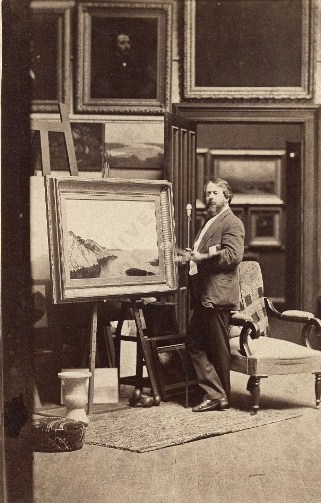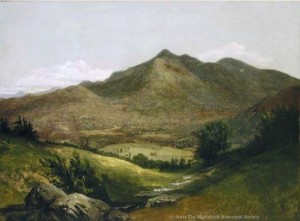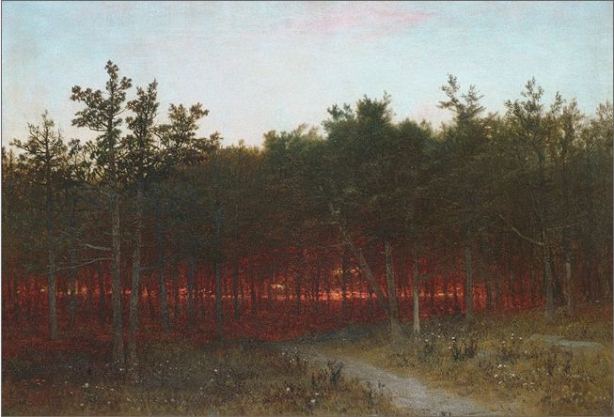John Frederick Kensett was a landscape painter who is now identified with Luminism—a style of painting that utilized delicate, almost invisible brushstrokes to capture subtle effects of natural light. Best known for his New York and New England landscapes, as well as for his Northeastern seascapes, Kensett spent his life not only producing art but financially supporting the arts and young artists throughout the 19th century.

John Frederick Kensett in his studio, ca. 1866 – Smithsonian Institution, Archives of American Art
Kensett was born on March 22, 1816, in Cheshire, Connecticut. He attended Cheshire Academy and studied engraving with his father, Thomas, in New Haven. After a brief apprenticeship in New York, he returned to New Haven after his father’s death (in 1829) to work for his father’s partner but gradually lost interest in engraving, preferring instead to paint.
In 1840, Kensett and some artist companions set off for Europe. There, Kensett traveled between England and France honing his craft and, in 1843, began sending some of his landscapes back to New York for exhibition. After working his way through Italy and Switzerland, Kensett returned to the United States in November of 1847.
Hudson River School Artist a Key Figure in Luminism
Once again in New York, Kensett became a member of the Century Association (an organization that supported the city’s artists and writers) and eventually became a member of the National Academy of Design. His work increasingly focused on picturesque views of the Hudson River, the Adirondack Mountains, and the Catskills.

John Frederick Kensett, Adirondack Landscape, Mount McIntire, ca. 1850, oil on canvas – Mattatuck Museum
In the 1850s, Kensett changed his focus to seascapes. He produced numerous paintings of Long Island Sound and areas around Newport, Rhode Island, that proved wildly popular with collectors and wealthy patrons who summered along the shoreline. His success not only brought him financial rewards but allowed him to become an active supporter of the art community. Kensett served as president and founder of the Artists’ Fund Society and became one of the founders of the Metropolitan Museum of Art.
In 1867, Kensett purchased a small parcel of land on an island just off the coast of Darien, Connecticut. Naming his new home “Contentment Island,” Kensett spent most of his time there working on the paintings of coastal views for which many now knew him. Five years after his purchase, the wife of his close friend, Vincent Colyer, drowned in Long Island Sound near Kensett’s home. It is believed Kensett contracted pneumonia after diving into the Sound in a failed attempt to rescue her. He subsequently relocated to his New York studio to separate himself from the traumatic event but was found lifeless in his studio just one month later. Today, he is often remembered with the context of the Hudson River School, a group of painters based in New York City who sought to convey a distinctly American spirit through their renderings of the natural environment.









